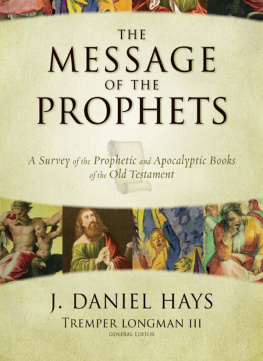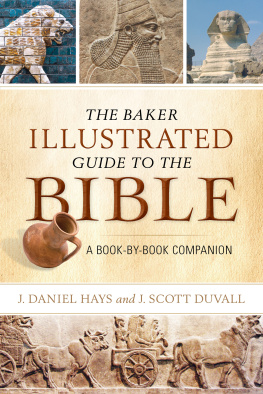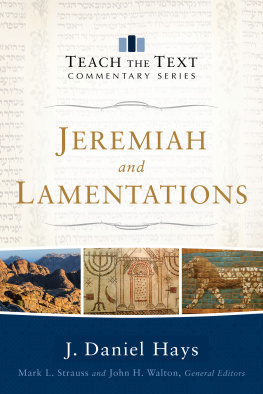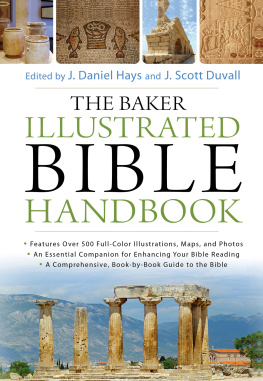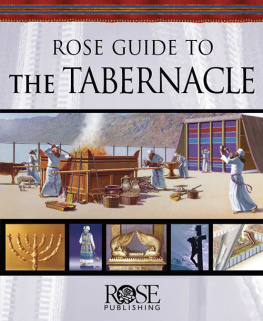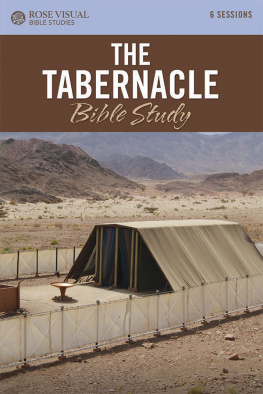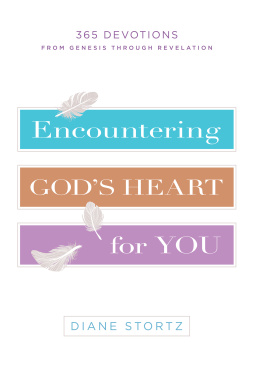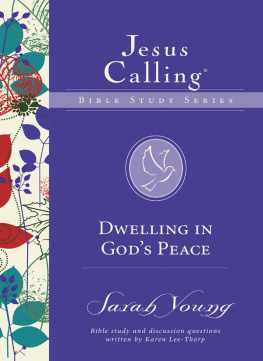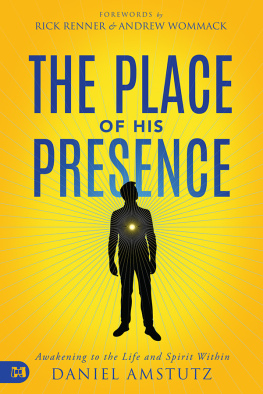. Luke 2 informs us that as a baby, Jesus is taken to the temple by his parents to be dedicated. Then as a twelve-year-old boy he visits the temple again, interacting with the teachers in the temple courts. However, in neither of these visits does Jesus yet come as the messianic king and as the returning presence of God.
. Walton, Ancient Near Eastern Thought , 11334.
. Dozeman, Exodus , 634.
Chapter 2 Gods Garden Temple
. At the time of Moses, temples containing the statues of pagan deities were widespread throughout Mesopotamia, Canaan, and Egypt. In the literary records from this era, as well as before and after, there are numerous accounts of how these pagan peoples and their gods supposedly constructed and inaugurated their temples. Recently, Old Testament scholar John Walton ( Lost World of Genesis One ) has observed that the central theological reality conveyed in Genesis 1 is that God is constructing and organizing the world as his temple in which to reside . Although Waltons thesis is still new and has not yet been widely accepted, it is nonetheless quite intriguing and is, no doubt, at least partially correct. That is, there certainly appears to be some connection or parallel between the creation in Genesis 1 and the theme of tabernacle/temple throughout the rest of the Bible, although some of the specifics of this connection are far from clear.
. This list is developed from Wenham, Sanctuary Symbolism, 399404; and Beale, Temple and the Churchs Mission , 6680.
. Wenham, Sanctuary Symbolism, 401.
. Meyers, Tabernacle Menorah ; Beale, Temple and the Churchs Mission , 71.
. Wenham, Sanctuary Symbolism, 401.
. Some scholars have suggested that since eastward was the direction toward the sunrise, it was generally associated with the arrival of blessings and good things in general. Yet there is nothing in the biblical texts dealing with the eastward orientation of the garden, tabernacle, and temple that suggests this as the conceptual reason.
. For a good overview of the Babylonian ziggurat and its function, see Walton, Ancient Near Eastern Thought , 11923.
Chapter 3 The Ark and the Tabernacle
. Note that the north, south, east, west orientation of the tabernacle will be very important, mentioned twenty times in the tabernacle narratives (Exod. 26:18, 20, 22, 27, 35 [2x]; 27:9, 11, 12, 13; 36:23, 25, 27, 32; 38:9, 11, 12, 13; 40:22, 24). George, Israels Tabernacle as Social Space , 79.
. Beale, Temple and the Churchs Mission , 106.
. Dozeman, Exodus , 124.
. There is another interesting parallel with common religious concepts and practice throughout the ancient Old Testament world. Frequently in the pagan temples of Israels neighbors in the region, copies of treaties and oath-covenants were permanently placed beneath the feet of the deity, stressing the inviolable nature of those agreements. If the ark is serving as the footstool for God, then the placement of the Ten Commandments into the ark would be very similar to this concept. See Sherwin, 1 Chronicles, 3:276.
. The tradition of translating this term as mercy seat goes back to the earliest English Bibles: Matthews Bible (1537), the Geneva Bible (1560), the KJV (1611).
. New Websters Dictionary and Thesaurus of the English Language (New York: Lexicon, 1987).
. Enns, Exodus , 51314.
. Meyers, Tabernacle Menorah , 2731.
. Ibid., 3134.
. These are the dimensions that have been traditionally accepted by most scholars. Yet these dimensions have been extrapolated from the complicated sizes of the various curtains and covers described in Exod. 26:137, and thus we cannot be 100 percent certain.
. Hamel, Linen, 3:66667; and Propp, Exodus 1940 , 37374.
Chapter 4 Solomons Temple
. For further discussion and development of this thesis, see Hays, To Praise Solomon or to Bury Him? Generally agreeing with my conclusions, yet with some qualifications, are Seibert, Subversive Scribes , 3840; Pop, Cultic Places in 1 Kings 111, 1516; and Jeon, Pharaohs Daughter, 1540.


